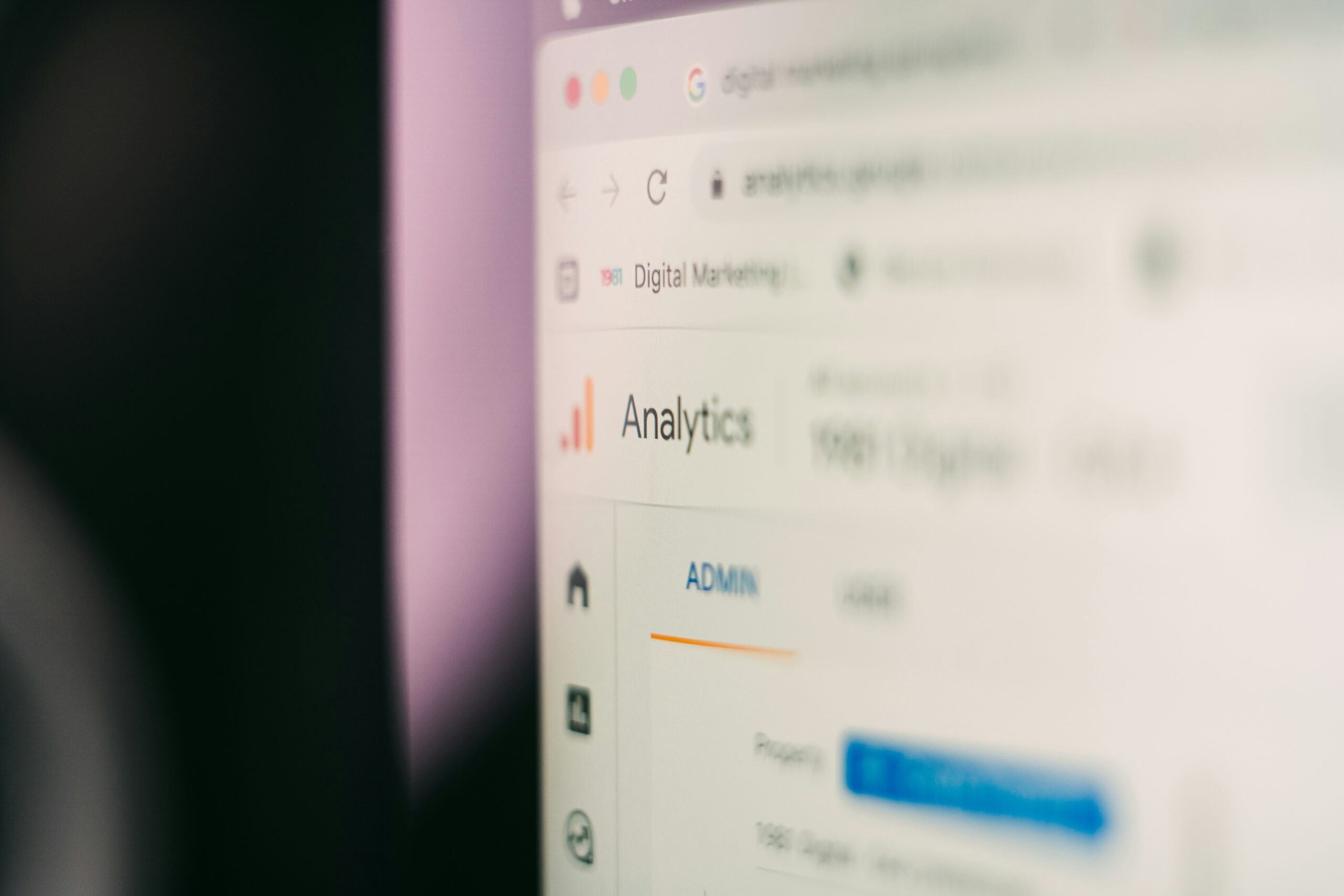Having an online presence and portfolio has become a necessary part of any business. Online portfolio websites are perfect for everyone including photographers, artists, designers, illustrators, models, architects, videographers, music makers, and students as a space to share what you create! We’ve answered the five most commonly asked questions about building an online portfolio.
What exactly is a portfolio website? Do I need one? How do I build a portfolio website and what information does it need to have? While there once was a time when you could rely on your own hard-copy portfolio and didn’t need an online presence, at this point, it has become an essential part of any business. You don’t need to be a web designer or a digital coder to create a portfolio that looks professional and is easy for visitors to navigate. All you need is a plan, some direction, and a little bit of patience. To get you started, we’ve created a guide and come up with some answers to the five most commonly asked questions about online portfolios.
What Is an Online Portfolio?
The first thing we need to start with is what exactly an online portfolio is. Creating a web portfolio is like turning show-and-tell into a public display – one that visitors can access anytime and anywhere. A portfolio site is one where you take the most prized projects you’ve worked on and move them into a website form. It’s a transition from the portfolio you have created for yourself into an online portal that potential clients can access at their own convenience. Websites as online portfolios are a really great way to catch people’s attention and to land a job you may not have even realized existed. At this point, an online presence isn’t something that’s a nice-to-have but has become a need-to-have. It’s an online business card, it’s your own personal hall-of-fame for all to see. An online portfolio is everything!
What Is a Portfolio Website?
Simply said, your portfolio website is a portal to showcase the online portfolio we were mentioning above to the world. It’s the vehicle that lets your individual work be shared on a public platform. A portfolio website is a unique way to tell your own story, give potential clients basic information on who you are, allow you to showcase your work, and gives them a way to contact you. Online portfolios are for everyone from photographers to artists, designers, illustrators, models, architects, videographers, music makers, and students to have a space to share what they create. They are built to showcase a wide range of art and should be catered to your style, personality, and goals.
Get Started
You don’t need to be a professional website builder to build a professional website. To get started with your portfolio website, you are going to need to have the following:
Web design
This is the part where we talk about the actual design of your website. The foundation that holds up your structure. Choosing a template is the place where you need to start, we’ll get to that later on.
Graphic design
Here is where you will need your logo design, flyers or any promotional pieces you will be putting on your website. Maybe it’s as a landing page or on your home page. Your graphic design needs to convey the personality and vision of your work. It should also stay consistent to your brand.
Marketing
Marketing is the part that’s focused on building your digital presence. Search engines are a big part of this — you are going to build your website but then you are going to want people to actually find your website when you google it. That’s where SEO comes into place and it’s not something we can forget about.
Your work
Lastly, but most importantly, your work is the biggest part of all online portfolio sites. Showcasing your skills. Your work. Your art. You are the art director and this is where it goes.
Template Designs
The template design is an important part of building your website. Depending on what type of work your portfolio website is showcasing, there are a number of different template designs you can choose from. Format has a variety of different online portfolio templates and themes to choose from. Take your time to sift through the number of different digital canvases available that can be used to create your website portfolio. Make sure you choose one that fits your essence, personality, and brand. Once you have chosen your design, you can start to build the perfect portfolio website!

What Should a Portfolio Include?
Before you dive into developing your online portfolio, it’s important to take some time to decide what the purpose of your portfolio site is. Will you be using it as an online resume because you are looking to get hired? Do you want to use the site to get new clients for your own personal business? Once you decipher your ultimate goal, it will be easier to design the site that will help you reach it. Your portfolio website needs to catch visitor’s attention and give people coming to your site a good user experience. To do that, you should be sure to include the following pages: examples of your work, an about page, case studies, testimonials, a blog, and a contact page. Here is a breakdown of the content you’ll need:
Your Work
This one is a bit of a gimme – but, of course, your work needs to be showcased on your site! Be selective and choose the specific items that you really want people to see. Try to put yourself in the shoes of clients who will be visiting your website and think about what you would want them to see first, while also taking into consideration they may only see 1-2 things. You want to be selective with the content that you choose to share on your site, so put some thought into your best pieces and think about giving a variety that shows your ability in a number of different areas. In this section, it’s a good idea to put a logo somewhere on your work so it can’t be picked up by someone unauthorized. Using your logo can help with the security of your entities.
You can showcase your work in a number of different ways – you can choose to use a video presentation, have an automatic slide show, put together a thumbnail gallery, etc. You should also make sure to give your work its own page on your website. Your work is one of the most important parts of putting together your portfolio online, so really use it to show off your talent.
About Page
This is the section where you let your audience know a little bit more about you – the person behind the portfolio. In this part of your website, you can let clients know who you are, what your passions are, and explain some of your background. Tell them a story. It’s also a place where you can let potential employers or freelancers know about the purpose of your website – of the work or projects you are looking to take on and the purpose of your online portfolio. It’s an opportunity to share the services you can offer. Make sure to add a headshot and your name. You can also link them to other places where they can find out more information about you. For example, you might want to drive them to your LinkedIn account where they can see more about your skills or any references you have on there. This part of your site is about you, so show them who you are. Use your spark or humour or charm! Make sure your about page gives a person visiting your site a glimpse at who you are and has your personal flare on display.
Contact Details
Since your portfolio website is essentially a business card, a contact page is your call to action where you provide various ways for people to contact you. As you develop this part of your site, go back and think about your purpose – what are you wanting a potential client to connect with you about? It’s also important to give people a number of different options. For example, you can provide a form where the person will fill out their details that will then be sent directly to your inbox where you can choose to reply. You can also leave your email and phone number as a way to let the customers connect with you on their own time and find their way into your inbox or voicemail when they are ready. If you don’t have a business email address, now is a great time to make one! This will add to the professionalism of your company. If you haven’t taken that next step yet, building this part of your portfolio website is a good enough reason to take it.
Testimonials
As you create your online portfolio, adding testimonials will go a long way in legitimizing your site and your services. Go back to previous clients or people you have worked with on different projects and ask them to say something about your work. While you can list your skills, sometimes having other people say it for you will be more meaningful and impactful towards landing that job you’ve been eying.
Case Study
Sharing a case study is a section of your site that allows you to go further in-depth with your portfolio and provide information on some projects you’ve worked on in greater detail. Using a case study or a presentation will help demonstrate the full scope of projects that you’ve worked on – beyond just showcasing the final product. This information should outline a project from start to finish, so it should include the purpose of the project, how you approached it, what you accomplished, the duration from start to finish, and your role. Of course, it should also include the final product. It’s a great way to highlight different elements of your portfolio and the essence of the work you are doing!
Blog
Creating a blog on your portfolio website is another great avenue to showcase your talent and ability. It can be used to personalize elements of your portfolio and add value by sharing some of your thoughts and ideas. Written content through a blog post is a great place to talk about your design process or give people some useful tips. It can also be a way to share a thing or two you love the most about your portfolio or talk about some of the events you have worked at. A blog also adds more content, which can go a long way in improving the SEO of your site. They can be a great way to market your online portfolio! Having a blog isn’t a need to have, but it is nice to have.
How Many Pages Should Your Portfolio Be?
Your portfolio should show a wide range of skills and abilities through the largest variety of work you can share. It is suggested that you fill about 20-30 pages of online space on your portfolio site. Showing a healthy breadth of different content options will go the furthest. A potential client will want to see the different services you can deliver or projects you have worked on. It’s still important to be creative and selective in ensuring that you are presenting your best work. The design of your portfolio site should be that you can hold enough pages of your quality content. This means you don’t want your site to be too laggy because you have lots of pages, so be sure your site is good enough to handle it. Quality over quantity is always something that you should keep in mind as you decide the pieces you are going to highlight in your online portfolio.
How Do I Make a Portfolio?
And now that you have all the information you need to create an online portfolio website, it’s time to get moving. Your portfolio website needs to be easy to navigate and user-friendly, but it also should be easy to maintain for your own sake. If you aren’t a web designer, then make sure to set yourself up in a way you can easily maintain long-term. Start by choosing a format for your portfolio using Format that best suits the style and themes you are looking to portray. You are going to want to put some thought into what you want your domain name to be, the plug-ins you want to host on your website. The development stage putting together the website can be time-consuming, but once the structure is set up it becomes easy to maintain and update as you go. Don’t be shy to ask designers for tips if you run into any problems as you are building the site, because websites can be tricky. The best part is, once it’s all set up you’ll have a beautifully polished portfolio to share with the world.
We are excited to see the online portfolio you develop! The world is yours.
Looking for more resources for your online portfolio website? Check these out:
Our Ultimate Portfolio Inspiration List
How to Create Photography Packages that Sell
The 5 Best Tools You’re Not Using to Grow Your Photography Business














